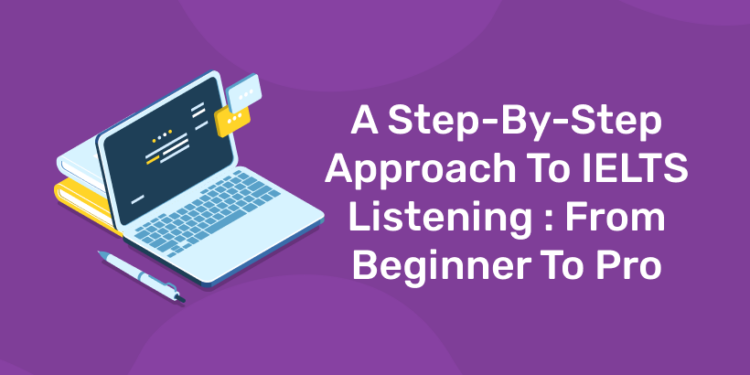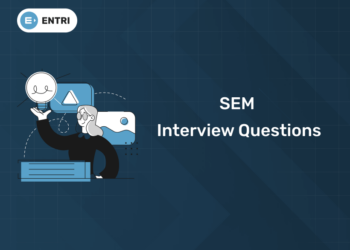Table of Contents
The International English Language Testing System (IELTS) is a set of tests meant to help you get a job, study abroad, or migrate to a country where English is the first language. The countries of Australia, Canada, New Zealand, the United Kingdom, and the United States are all represented. During the test, your abilities to listen, read, write, and converse in English will be evaluated. The IELTS examination is assessed on a score scale of 1 to 9. The British Council, IDP: IELTS Australia, and Cambridge Assessment English cooperatively own IELTS.
IELTS Listening is divided into four parts, with 10 questions in each section. The test takes around 30 minutes to complete, with each section getting increasingly more difficult. You will have 10 minutes at the end of the listening test to transfer your answers to the answer sheet.
In Part 1, there is a conversation between two speakers (for example, a conversation about travel arrangements), and in Part 2, there is a monologue in (for example, a speech about local facilities). The final two parts deal with situations set in educational and training contexts.
The recordings are heard only once. They include a range of accents, including British, Australian, New Zealand, American and Canadian.
Step By Step Approach To IELTS Listening
Familiarise yourself with a range of accents
The IELTS Listening test will feature a range of accents to reflect the international nature of English. Therefore, you should get used to listening to accents from a range of English-speaking countries. For a wide range of accents you can watch TV shows from different English-speaking countries. A quick search on Google is all you need to find these.
Familiarise yourself with the different types of questions
Use genuine past papers to practice that will help you to react with the given questions. By practicing you will be familiar with the questions and you’ll know exactly what to expect on test day.
Follow the instructions carefully
One should follow the instructions carefully when it comes to the word limit. If the question states ‘Not more than three words’ then you can’t write any more than this. If your answer is four words, then it will be incorrect.
Practice listening to things only once
It is strongly recommended that practicing the exam under exam conditions, which means listening just once.
Don’t lose your concentration
It is quite difficult to be focused in IELTS listening. To improve your concentration you need to practice active listening.
crack ielts exam with ease ! join for a free demo video !
Details Of IELTS Listening
IELTS listening test consists of four parts.
PART 1: Conversation between two speakers about everyday situations
It is the easiest section. Speaker talks quite slowly, making pauses. The key information is usually repeated. In this section focus only on given facts.
PART 2: A monologue about everyday situations
In this part Speaker talks quite slowly, but makes less pauses than in previous section. In this part focus only on given facts.
PART 3: Conversation between two,three or four speakers about education and training situations
This part is harder than the two previous, speakers discuss topics at a faster pace and sometimes use advanced vocabulary. In this section focus on given facts and speaker’s opinions and attitudes.
PART 4 : A monologue on academic subject
It is the most harder part. There is no break in the middle, the speaker talks quite quickly and uses a wide range of vocabulary. In this part also focus on given facts and speaker’s opinions and attitudes.
How To Improve Your IELTS Listening?
- Complete official practice tests under exam conditions.
- Identify any particular question types that caused you problems.
- Analyse your mistakes.
- Think about why you made those mistakes. What were the particular reasons why you answered those questions incorrectly? Was it timing, strategy, vocabulary, grammar, listening skills, spelling?
- Focus on improving your weakest areas first.
- Repeat the process until you are consistently getting the score you need.
IELTS Listening Score
For the IELTS listening test there will be 40 questions each carry 1 point. Depending on how many points you gain, you can achieve a score from 0 to 9 points for the Listening Section.
The following table will help you to calculate your IELTS Listening score:
| Raw score (out of 40) |
39-40 | 37-38 | 35-36 | 32-34 | 30-31 | 26-29 | 23-25 | 18-22 | 16-17 | 13-15 | 10-12 | 8-10 | 6-7 | 4-5 |
| Band score | 9 | 8.5 | 8 | 7.5 | 7 | 6.5 | 6 | 5.5 | 5 | 4.5 | 4 | 3.5 | 3 | 2.5 |
Essential Tips For IELTS Listening
- Before the recording begins for any part, do read all the questions carefully. This will help follow the recordings and identify the answers easily.
- Once a section is complete, you can move ahead and read up the questions for the next section.
- At times, there will be a list of options to make a pick from. It is not necessary that the answers will be in the order you hear them, they may could also be listed alphabetically.
- Do note the word limits for each section. If an instruction says, ‘Write no more than two words’, stick to it. If you write more than the specified limit, you may end up getting no marks for the attempted answer.
- Be attentive and look out for the key words or synonyms (words with same or nearly same meanings as another word) from the question. This can help identify the answer. For instance, if you hear in the recording: “She likes going to the gym and playing tennis”; it could reflect on your answer sheet/ screen (in computer-delivered IELTS) as “She is an active person.”
- In questions where you have to write down words spelled out in the recording, you need to be well aware of the English alphabets and how they are pronounced. For instance, the alphabet ‘W’ is pronounced as ‘double-u’).
- Listen carefully for words indicating the stage of the recording you are listening to, e.g. ‘firstly’, ‘my next point’, ‘to sum up’. These words help identify which question you have reached.
- while listening to a recording, you can keep crossing out the options that do not fit. It makes it easier to find the right option.
- If you have to mention dates in any answer, remember there are various correct ways to do so (e.g. April 24, 24th April and 24 April – all are correct).
- If you face trouble in answering any question, leave it and move on. Don’t waste time on it and end up panicking. If you have time left in the end, come back to it later.
- If you are taking IELTS on paper, you are given 10 minutes to transfer your answers from the Listening booklet to your answer sheet once the last recording is over. It is best to wait till the recordings end to transfer the responses to the answer sheet (and not in between sections) as you may end up missing some important information about the test’s next section.
FAQ’S
Q: What question types are there in IELTS Listening?
Ans: IELTS includes more than just multiple-choice questions. You may have to answer short questions, complete sentences or a summary, or label a diagram. There are ten questions in each section and these will generally be of one to five different types.
Q: What IELTS Listening score is required for university entry?
Ans: It varies by university and many do not specify a requirement for each module. However, you should be aiming to achieve a score of at least 6 in IELTS Listening (23-29 correct answers) if you intend to study at an English-speaking university. A band score of 5 (16-22 correct answers) may be sufficient for some foundation and professional English courses.
Q: How many times will each listening passage be played?
Ans: Once only. If you miss the answer to a question, you should quickly have a guess and then focus your attention entirely on the next question.
Q: How much time is there to read the questions?
Before each section begins, you will have a short time of up to 30 seconds to preview questions. There will usually be one more short break in the recording to preview further questions. That is why you should listen carefully to the instruction which tells you exactly which questions will be covered in the next part of the recording. For example: You now have some time to look at questions one to five.
| Related Links | |
| All About IELTS Exam | IELTS Reading Practice Test |
| IELTS Listening Practice Test | IELTS Writing Practice Test |
| IELTS Speaking Practice Test | Vocabulary in IELTS |










